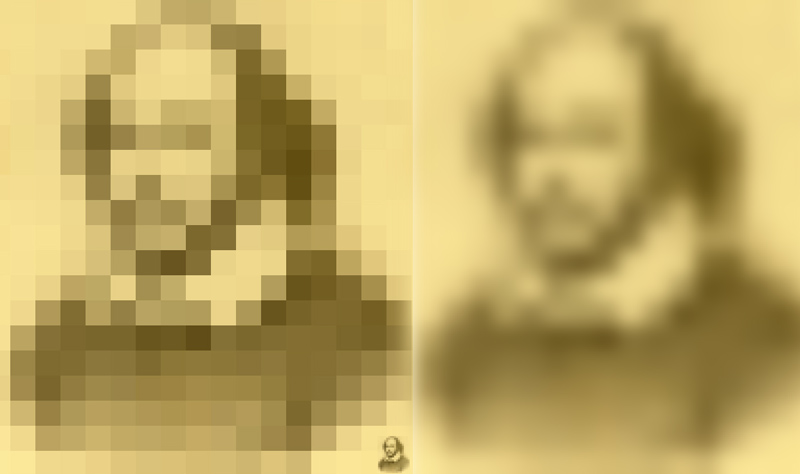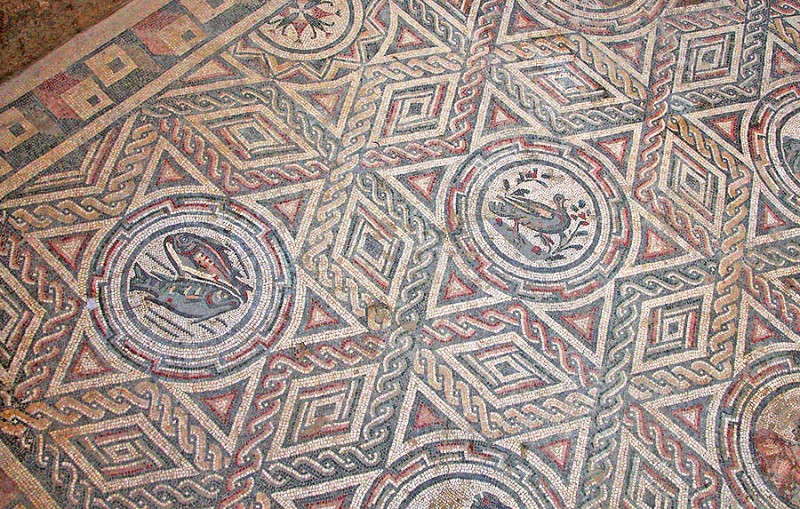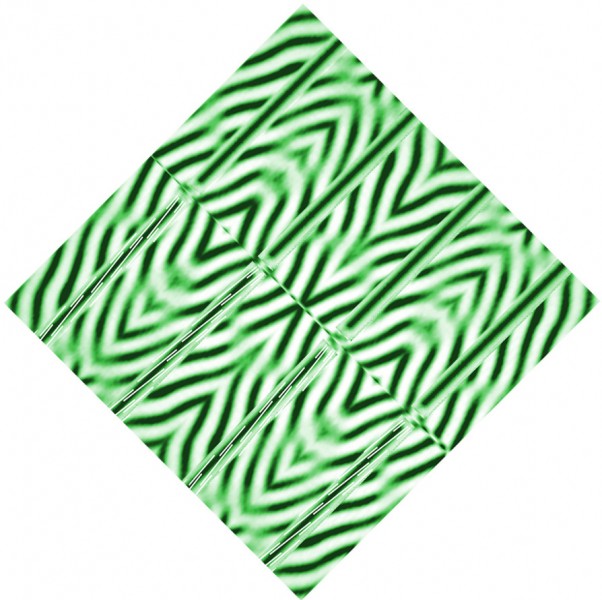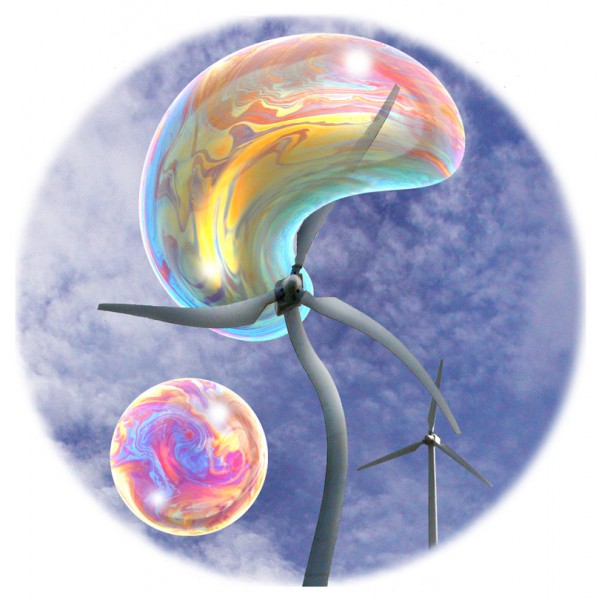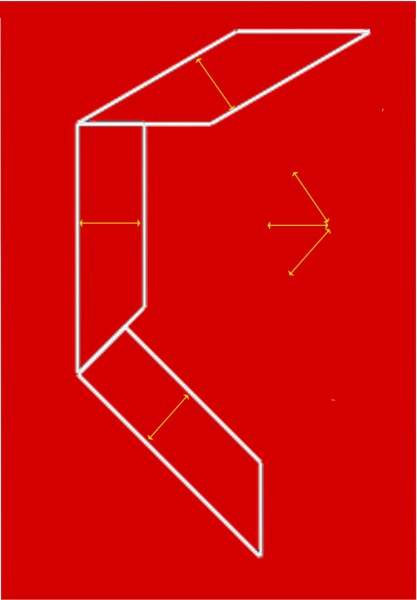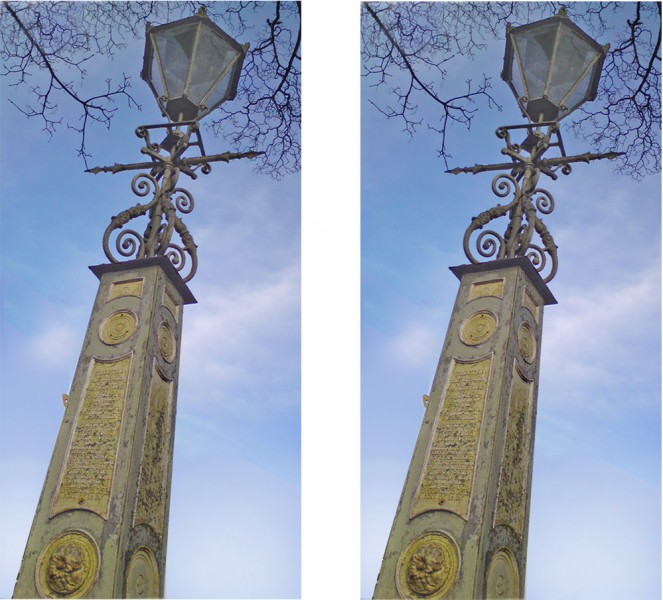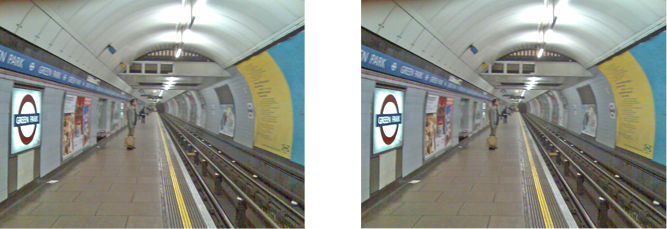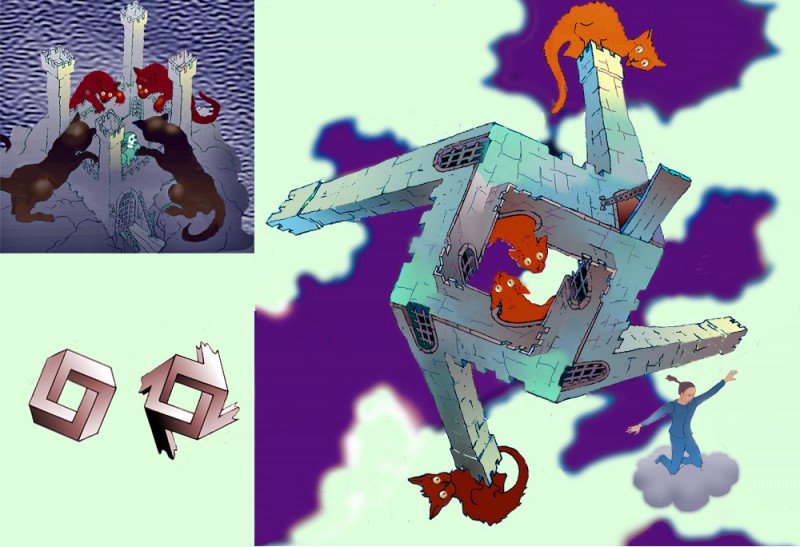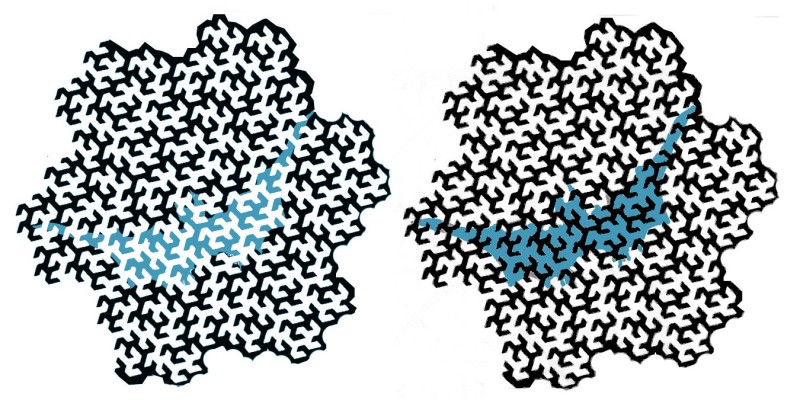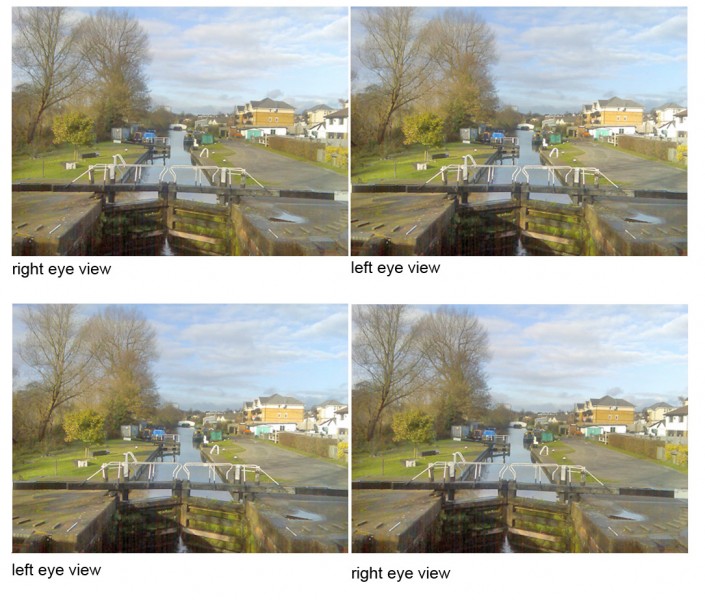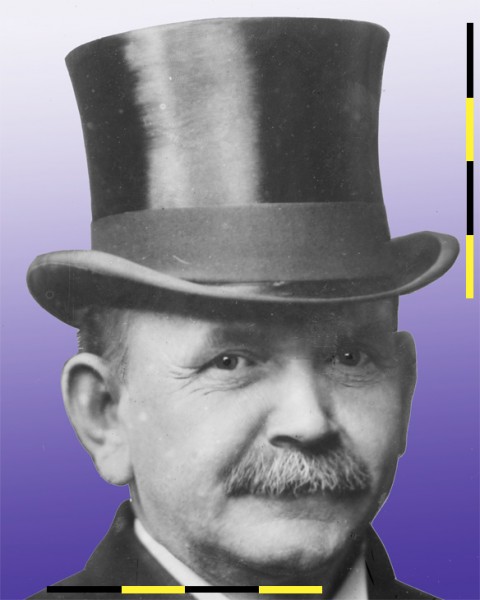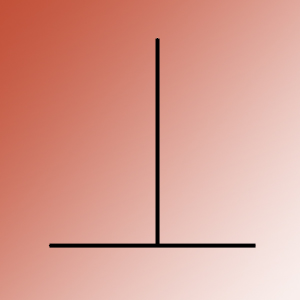Who’s this?
Yes, it’s Shakespeare! Back in 1973 researchers Leon Harmon and Bela Julesz produced their famous Lincoln Illusion. They demonstrated effects when an famous image of a face, such as Abraham Lincoln’s, is pixelated quite coarsely. We can still recognise it easily if the pixelated version is either blurred (as to the right here – it’s a blurred version of the pixelated image, not of the original), or reduced in size, as if seen from a distance. Just three years after the original Scientific American article that made the effect widely known, Salvador Dali based a picture on the Lincoln image. (Michael Bach’s site shoes the original Lincoln image, the Dali picture and a clever interactive demo).
Note the tiny Shakespeare perched in the very bottom right corner of the left hand, pixelated image above. It’s just the pixelated image reduced. If you move away from the screen a few feet, you’ll find that the two large images of Shakespeare come to look more and more alike. It’s odd how even small details of the face seem to appear. If you want to try it with faces you know, I think it works best with about seventeen pixels along the longest dimension of the picture. It does work best with an iconic, image – a photo everyone knows – rather than just a face you know.
So who have we here?
I think you’ll have got those, but otherwise (and for more stuff) …
